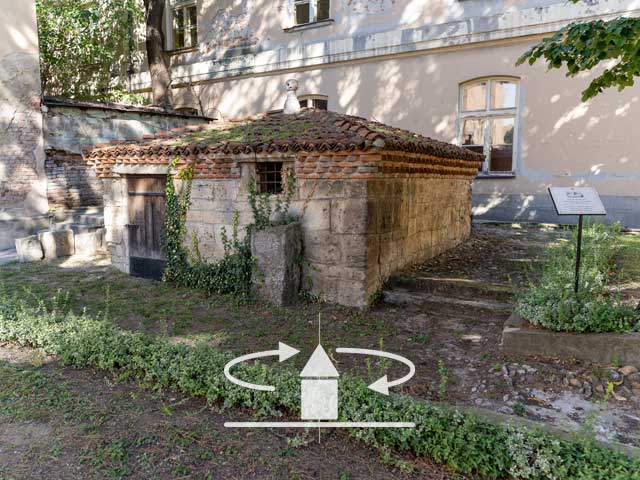HAJDUK VELJKO’S ARMORY
Protected cultural monument of extraordinary significance, listed as SK 223 with the Republic Institute for the protection of monuments of cultural heritage.
HAJDUK VELJKO’S ARMORYNegotin municipality
Where is it
Hajduk Veljko’s Armory is located in the very center of Negotin, in the gate of the new Holy Trinity Church.
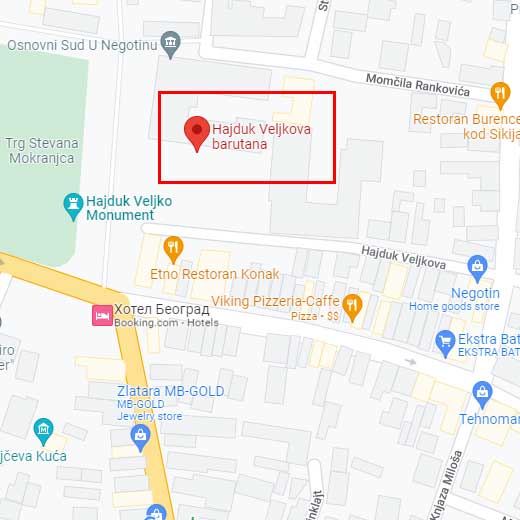
History
The armory whose name is linked to that of Hajduk Veljko –legendary Veljko Petrović (1780-1813), a hero of the First Serbian Uprising (1804-1813) was built especially to keep gunpowder that was used for the defense from the Turks during the First Serbian Uprising. It was Hajduk Veljko himself who reinforced Negotin and organized the defense from the Turks. In the summer of 1813 the Turks attacked Negotin with 16000 soldiers. Hajduk Veljko led the group of 3000 rebels who resisted the attack for about twenty days. He was killed and the city was conquered by the Turks.
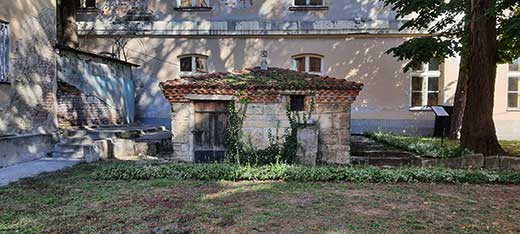
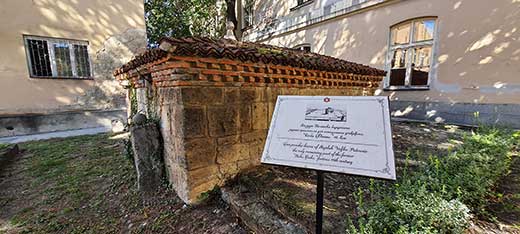
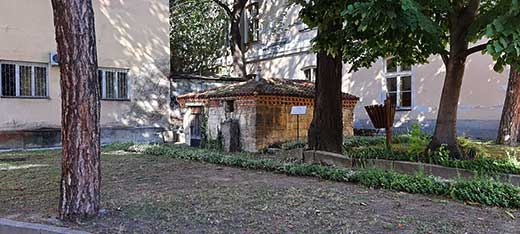
Description
The armory was originally a part of the „Baba Finka” fortification that was destroyed in 1833 and this is the only preserved remnant. The fortification encompassed the space of today's City hall building, church yard, grammar school, and surrounding streets – today's town center. It was, in fact, more of a watchtower, built of wood, on multiple levels. From its top Hajduk Veljko looked out on the Negotin fields, expecting the Turks.The purpose of the building caused the construction solution: in order to preserve gunpowder the edifice is buried inside the ground. It was built in stone blocks, vaulted with semi-circular vault and covered in roof tiles. The only decoration is a wreath made of five rows of bricks under the roof, with two middle rows laid slantingly. The entrance is blocked with massive wooden doors and the small window under the roof, which let the daylight in, is protected with grids.
The building preserves its authentic look to this very day.
Dating
The armory was built at the beginning of the Uprising, in 1804 and served its purpose until 1813.
Хајдук Вељко
Veljko Petrović (1780-1813), known as Hajduk Veljko, is one of the greatest heroes of the First Serbian Uprising. He was with the rebels from the very beginning, first as a soldier in Stanoje Glavaš's troop and he became a duke in 1811 when he came to Negotin. After the first conflict with the Turks, in early 1813, his cavalry reached as far as Vidin. However, the Turks stormed Negotin region (Krajina) with a great army. In the first battle in early July Veljko and his army defeated the Turks near the village Bukovača. Several days later, the Turks marched for Negotin. Hardly 3000 Veljko's soldiers resisted Turkish army five times larger. They resisted for 18 days. It is said that anything made of metal in Negotin was melted for the cannon ammunition, including dinner plates and lamps. On the nineteenth day of defense, July 18th 1813, Hajduk Veljko died a heroic death. His brother buried him next to the church in Negotin. His life motto remains: „I will give my head, but I will never give Krajina!”
Hajduk Veljko lived in Negotin with his second wife, Čučuk Stana. He owned a horse Kušlja who entered the legend with him. And the legend says that Veljko used to face the Turks in his best clothes, fully armed with guns and a sword, followed by musicians.
Hajduk Veljko's museum was opened in Negotin in 1997.
Јулка Кузмановић Цветковићархеолошкиња
